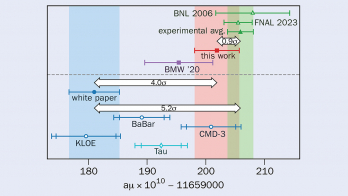by Maurizio Gasperini, Springer. Paperback ISBN 9788847014206, €25.72 (£19.99).

Maurizio Gasperini’s book is a textbook on the theory of general relativity (GR), but it does not present Einstein’s theory as the final goal of a course. Rather, GR is seen here as an intermediate step towards more complex theories, as already becomes clear from the table of contents. In addition to the standard material on Riemannian geometry, which always accompanies the development of the physical content of GR, and on the solutions of the Einstein equations for the case of a weak field (including a treatment of gravitational waves) and for the case of a homogeneous and isotropic system (including black holes), there are also chapters on gauge symmetries (local and global), supersymmetry and supergravity.
Given the purpose of the book, it is not surprising to find the treatment of the formalism of tetrads (vierbein), forms and duality relations, which constitute the bridge between the Riemannian manifold describing space–time and gravity and the flat tangent space with Minkowski metric. For the same reason, the author considers the general case in which the torsion of the curved space–time is not null (as in Einstein’s GR) in order to address the general case of a curved manifold, which is needed for the theory of the gravitino (i.e. of a local supersymmetry between fermions and bosons).
Other nice aspects of the book are the analogy between the Maxwell equations in a curved Riemannian manifold and in an optical medium, the computation of the precession of Mercury in the context of both the special and general theories of relativity, as well as several exercises whose solutions are a valuable ingredient of the book. Given the relatively small number of pages (fewer than 300), I can understand why a few stimulating aspects have been omitted (“gravitomagnetism” or Lense–Thirring precession, Hawking radiation and a discussion of the topological aspects left free by GR), but I sincerely hope that they could be included in a future edition.
Special mention should be made of the last four chapters, which deal with the Kasner solution of the Einstein equations in a homogenous but anisotropic medium, with the bridge between the curved Riemannian manifold and the flat tangent space, with quantum theory in a curved space–time and with supersymmetry and supergravity. These make the book different from most texts of its kind. In conclusion, I warmly recommend reading this book and hope that an English translation can help it reach a wider audience.








